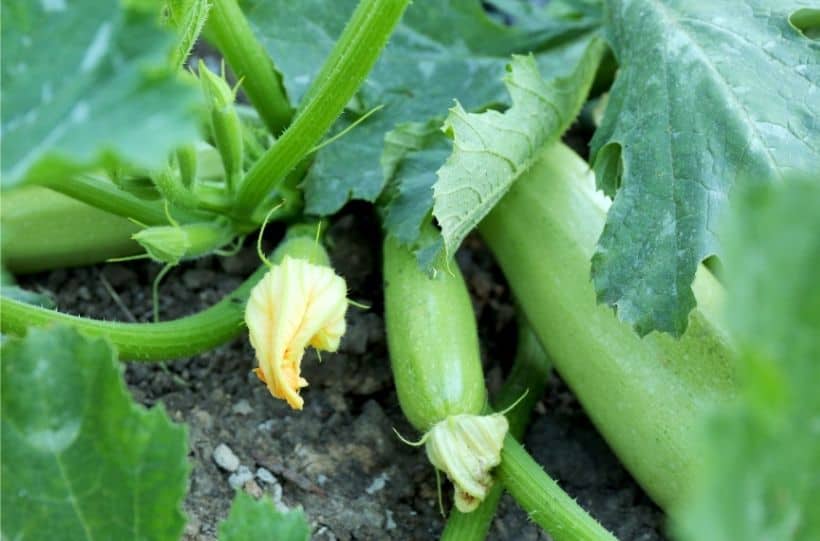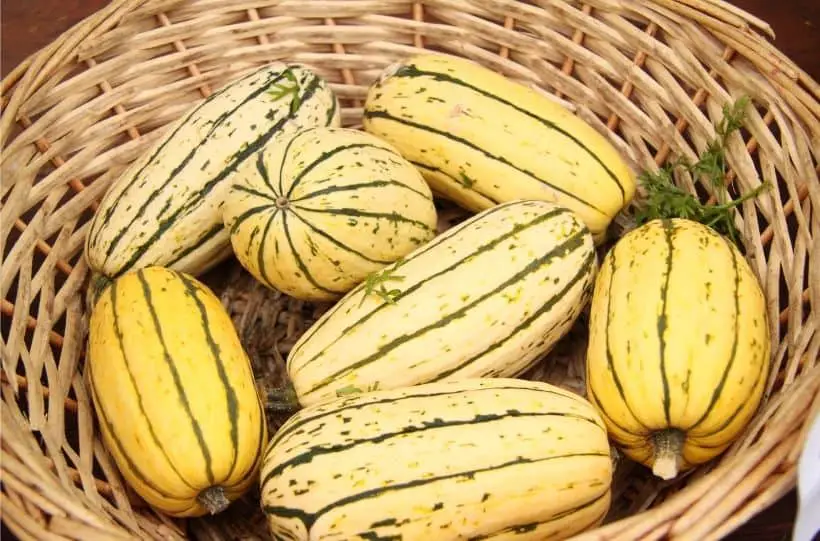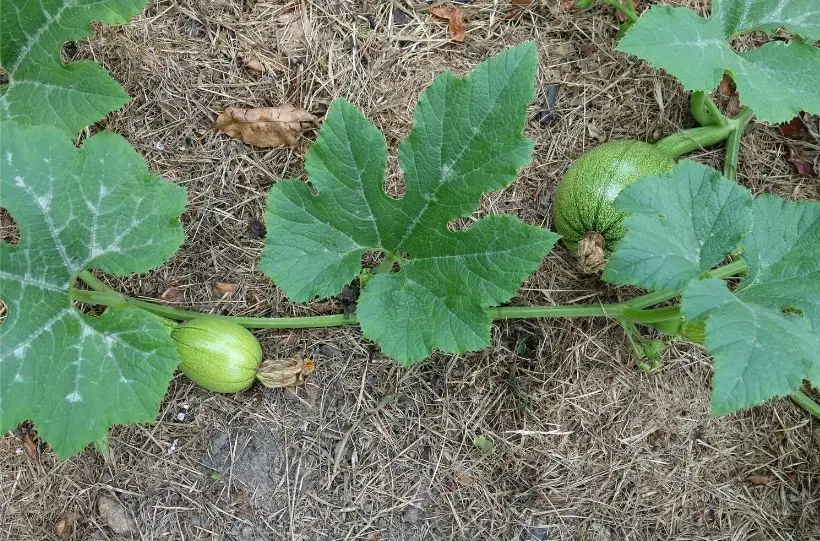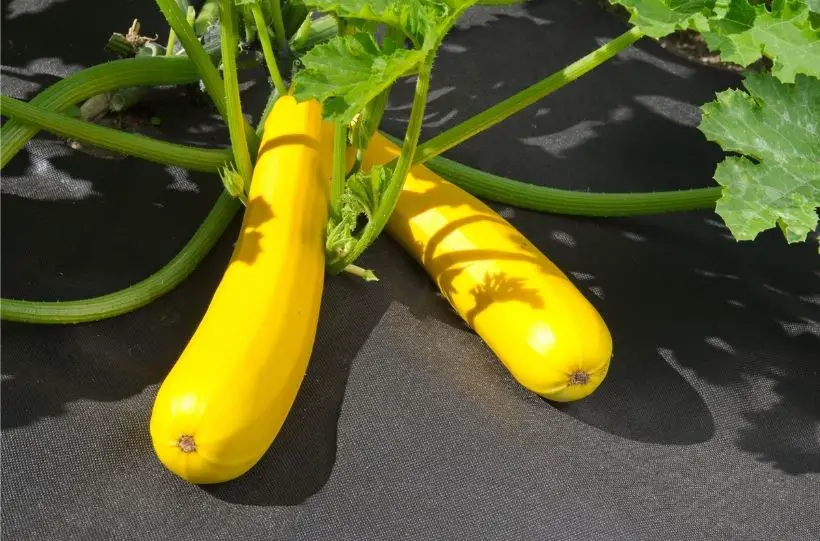7 Types Of Squash (Winter And Summer)
With over 100 types of squash, you can grow enough squash to last you throughout the year whilst not getting bored of the different flavors.
Though squash is technically a fruit, due to growing from a flower, it is considered a vegetable for its nutty and savory flavor. Each type of squash is categorized depending upon when it is harvested.
Squash can be classed as winter or summer squash. Winter squash is harvested in the summer and can be kept for a long time due to its hard exterior. Whereas summer squash is harvested earlier in the season leaving it with softer skin.
This post covers the key differences between winter and summer squash, along with popular varieties of each that you can easily grow at home.

Winter Squash
Though winter squash generally has a longer growing period compared with summer squash, this supports it to have a longer time frame in which it can be stored. Winter squash can last between 2 and 4 months when stored in a cool, dry environment, depending on the variety.
Once the skin gains spots and become softer, it has passed its prime and requires composting. Popular winter squash varieties include acorn, butternut, Hubbard, and spaghetti squash.
Acorn Squash
Acorn squash comes in several colors and is known for its acorn shape.
If you are looking to grow acorn squash, you need a lot of space, around 50 square feet for up to 3 plants. The soil needs to be rich in nutrients and at least 60°F. Do not try to plant before the last frost has passed.

Acorn squash will be ready to harvest before the first frost later in the year. Ensure to leave at least 1 inch of stem attached to your squash.
Butternut Squash
Butternut squash is a paler orange color and oblong-shaped squash. It is best sown between April and June ready to plant outdoors in May and June.

Each squash plant requires at least 1-1.5 meters of space between them. The seedlings can be transferred outdoors mid-summer and require fertilizing throughout the growing season.
They are best harvested before the first frost, between August and October. Once harvested, butternut squash can be stored for up to three months.
Delicata Squash
Unlike most types of winter squash, delicata squash has a softer exterior similar to summer squash. It has cream skin with green stripes and is smaller than other squash.

If you require a squash with a shorter growing season, delicata squash is an ideal choice. It can mature within 80-100 days of being planted from seed. As they grow up to 28 inches wide, it is best to allow them at least 20 square feet of outdoor space.
Once the soil reaches 70°F, you can plant the seeds directly outdoors with access to full sunlight. Delicata squash requires regular watering to keep the soil moist, particularly before sprouting.
Once ready to harvest, it can be stored for up to 3 months if kept in a cool, dry place.
Spaghetti Squash
This type of squash is easy to grow and takes a relatively short time to mature for winter squash.

Spaghetti squash needs to be planted 4 feet apart from each other to allow enough space for growth and nutrient requirements.
With regular fertilizer and water during the growing period, spaghetti squash will be ready to harvest in 90 days. Like all winter squash, allow at least 1-2 inches of the stem to be attached so that your squash lasts longer. Your spaghetti squash can then be stored for up to 3 months in a cool, dark place.
Summer Squash
Summer squash varieties have softer skin due to reaching maturity faster and are harvested earlier in the season compared with winter squash. Because of this, these types of squash are best sauteed once picked or need to be used within 1-2 weeks.
Summer squash types not only include all types of zucchini, but also straight necks, round cultivars, and pattypans.
Pattypan
Pattypan squash has a unique appearance but is quite easy to grow. It has a pancake shape with bright yellow skin.

They are best planted indoors initially until the soil temperatures increase. Once the last frost has finished, add nutrients to the soil and rotate to improve drainage.
After approximately 45-70 days, your pattypan squash will be ready to harvest. As it is a type of summer squash, pattypan will not last long after being harvested. It is best to prepare and store fresh for 2-3 days or freeze.
Tatume
Tatume squash is a squash native to Mexico and is a smaller variety with striped, yellow-green skin.
Like most squash grown on vines, tatume squash needs to be planted 4 feet apart. Choose an area with full sun and high nutrients after the last frost has finished.

With regular watering and fertilizer, after 45 days, the squash will be ready to harvest. If harvested immediately, it will last around 2 weeks stored in a cool area. When harvested regularly during the growing season, it will encourage new fruits to grow.
Early Prolific
Early Prolific squash is a variety of straight neck squash that matures in 50 days. Once the frost has finished and the soil temperature reaches 60°F, early prolific can be planted directly outdoors.
The seeds need planting at least 48 inches apart in high nutrient soil with good drainage. Keep the soil moist and then water 1-2 times a week after the seedlings have sprouted.
Once the squash is 6 inches long, you can harvest and use it immediately or store it in the freezer. Ensure to keep harvesting each early prolific squash once it’s ready to encourage your plant to produce new fruits.

These 7 types of squash will offer you squash all year round to enjoy as well as different flavors. Remember to check whether you have selected a winter or summer squash so that you know how long they take to mature and how best to store them.
Summer squash matures relatively quickly but also does not last long unless frozen. Compared to winter squash which takes a long time to mature but can then be stored for at least 3 months.
Each squash variety requires lots of water, fertilizer, sunlight, and good drainage. Squash is also at risk from pests such as slugs and snails, so care is needed to manage these pests and minimize the risk to your crops.
For more growing tips on growing, taking care of, and using your squash plants, be sure to read these posts:
